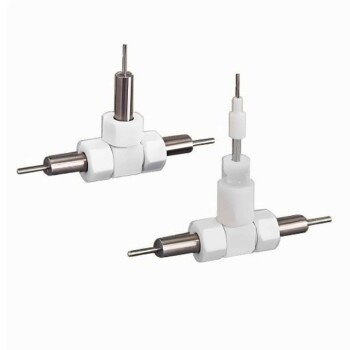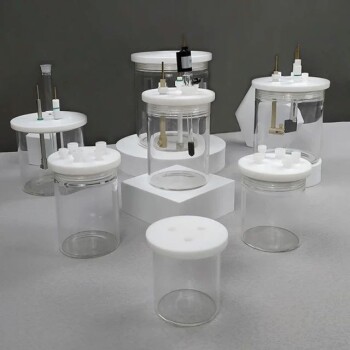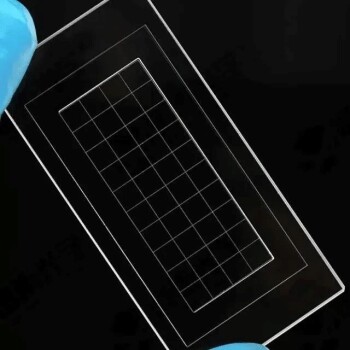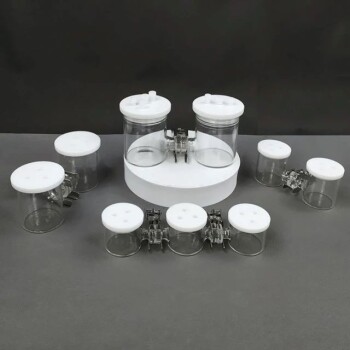基本的に、FTIR分光法は固体、液体、気体を含むほぼすべての種類のサンプルを分析できます。重要なのはサンプルの初期状態ではなく、分析のためにサンプルが赤外(IR)光に対して十分に透明になるようにどのように調製されるかです。選択された調製方法によって、装置が明確で解釈可能なスペクトルを取得できるようになります。
FTIRサンプリングの核心的な課題は、物質が分析できるかどうかではなく、それをどのように調製するかです。ペレットへの固体のプレスから塩板の間に液体を置くまで、選択する技術は、サンプルの物理的状態と分析目標に直接依存します。
固体のサンプルの調製
固体分析は、調製技術において最も多様性があります。目標は、IRビームがサンプルを透過するか、効果的に相互作用できるように、サンプルを十分に薄くするか、十分に分散させることです。
KBrペレット法
これは古典的な透過技術です。少量の固体サンプル(通常1〜2 mg)を、分光グレードの臭化カリウム(KBr)の粉末と多量に細かく粉砕します。
この混合物を、ペレットダイとプレスを使用して高圧下で圧縮し、小さく薄い半透明のディスクを形成します。KBrは、IR放射に対して透明であり、圧力下でプラスチックのような性質を持ち、サンプルを安定したマトリックスに形成できるため使用されます。
減衰全反射(ATR)
ATRは、今日使用されている中で最も一般的で便利な方法と言えます。サンプル調製はほとんど、または全く必要ありません。
固体(または液体)を、通常ダイヤモンド、セレン化亜鉛、またはゲルマニウムで作られた高屈折率の結晶に直接押し付けます。IRビームは結晶内で全反射し、「エバネッセント波」を生成し、サンプル表面に数マイクロメートル浸透してスペクトルを生成します。
薄膜分析
固体が揮発性溶媒に溶解できる場合、薄膜を調製できます。
溶液を一滴、IR透過性の塩板(KBrやNaClなど)の上に置きます。その後、溶媒を穏やかに蒸発させ、直接分析の準備ができた薄く均一な固体の膜を残します。
マルチング
この技術では、固体をマルチング剤、最も一般的にはニュージョル(鉱油)と混ぜて細かいペースト状にします。
このペーストを2枚のIR透過性塩板の間に薄く広げます。主な欠点は、マルチング剤自体のスペクトルがサンプルのスペクトルに重ね合わされ、重要な領域が不明瞭になる可能性があることです。
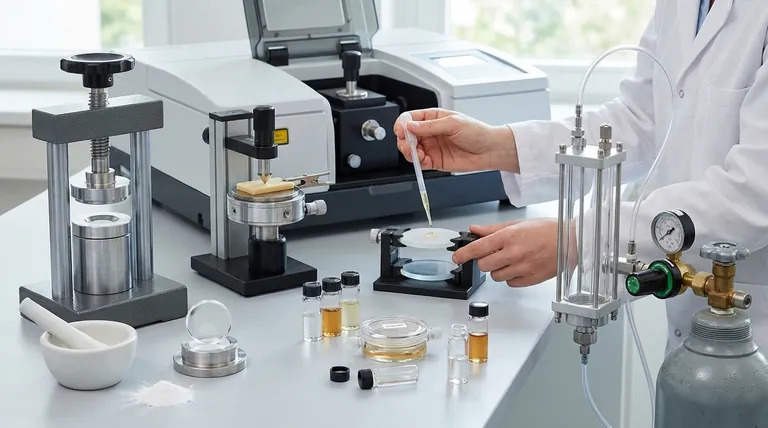
液体のサンプルの調製
液体の分析は、分析に必要な薄い層を容易に形成できるため、固体の分析よりも一般的に簡単です。
ネート(純粋な)液体
最も簡単な方法は、純粋な液体の1滴を2枚の塩板の間に置くことです。板をそっと絞り、非常に薄い毛細管膜を形成させます。この「サンドイッチ」を分光計のサンプルホルダーに直接セットします。
溶液
サンプルが溶解する必要のある固体である場合、または純粋な液体が強すぎる吸収を示す場合、溶液として分析できます。
サンプルを、関心のある領域でIR吸収が最小限の溶媒(例:四塩化炭素またはクロロホルム)に溶解します。この溶液を、定量分析のために正確に定義された光路長を持つ密閉された液体セルに注入します。
気体のサンプルの調製
気体の分析は、液体や固体と比較して分子濃度が非常に低いため、特殊な装置が必要です。
ガスセル
気体は、両端にIR透過性の窓を持つチューブであるガスセルを使用して分析されます。
十分な信号を得るために、これらのセルは長い光路長を持つように設計されており、多くの場合、内部ミラーを使用してビームを気体中を何度も往復させます。光路長は数センチメートルから数メートルに及びます。
トレードオフの理解
各サンプリング方法には明確な利点と欠点があります。信頼性の高いデータを取得するには、適切な方法を選択することが重要です。
使いやすさ 対 スペクトル品質
ATRは速度と簡便さのチャンピオンであり、日常的な品質管理に最適です。ただし、浸透深度のばらつきにより、得られるスペクトルは古典的な透過スペクトルとわずかに異なる場合があります。
KBrペレット法は、手間がかかり、湿気汚染に対して非常に敏感ですが、ライブラリマッチングの「ゴールドスタンダード」と見なされることが多い、非常に高品質な透過スペクトルを生成する能力があります。
サンプル完全性と汚染
KBrペレット法とマルチング法は破壊的です。サンプルは別の物質と混合され、容易に回収できません。ATRは非破壊的であり、貴重なサンプルを扱う際の大きな利点です。
マルチングはマルチング剤によるスペクトル干渉を引き起こします。KBrペレットは吸湿性(空気中の水分を吸収する)があるため、KBr粉末を完全に乾燥させておかないと、水ピークが非常によく見られるアーティファクトになります。
サンプルに最適な方法の選択
選択は、サンプルの物理的形態と分析から何を学ぶ必要があるかに基づいて導かれるべきです。
- 迅速で日常的な固体または不揮発性液体の分析が主な焦点である場合:比類のない速度と最小限のサンプル調製のためにATRを使用します。
- 固体の高品質なライブラリ品質のスペクトルを得ることが主な焦点である場合:KBrペレット法を使用しますが、必要な細心の注意を払った調製に備えてください。
- 純粋な液体または溶液中のサンプルの分析が主な焦点である場合:迅速な定性スキャンには一対の塩板を、定量分析には密閉された液体セルを使用します。
- 気体または気体の混合物の分析が主な焦点である場合:適切な光路長を持つ専用のガスセルが唯一効果的な選択肢です。
サンプルの状態と分析目標に合わせて調製技術を合わせることで、FTIR分析から正確で信頼性の高い結果を引き出すことができます。
要約表:
| サンプルタイプ | 一般的な調製方法 | 主な特徴 |
|---|---|---|
| 固体 | KBrペレット、ATR、薄膜、マルチング | 多用途性。方法の選択はスペクトル品質と使いやすさに影響します。ATRは高速で非破壊的です。 |
| 液体 | ネート(塩板)、溶液セル | 簡単な調製。薄い層を容易に形成します。定性分析と定量分析に最適です。 |
| 気体 | ガスセル(長光路長) | 特殊なセルが必要。長い光路長が低い分子濃度を補います。 |
KINTEKの適切な機器で正確なFTIR結果を解き放ちましょう。固体のKBrペレットの調製、塩板による液体の分析、または気体での作業であっても、信頼できる実験用品を用意することが不可欠です。KINTEKは、ペレットダイ、プレス、ATR結晶、塩板など、研究室の専門家の多様なニーズを満たすように設計された、高品質なFTIR消耗品およびアクセサリを専門としています。サンプル調製を完璧なものにしてください—今すぐ専門家に連絡して、FTIR分析に最適なソリューションを見つけてください!
ビジュアルガイド
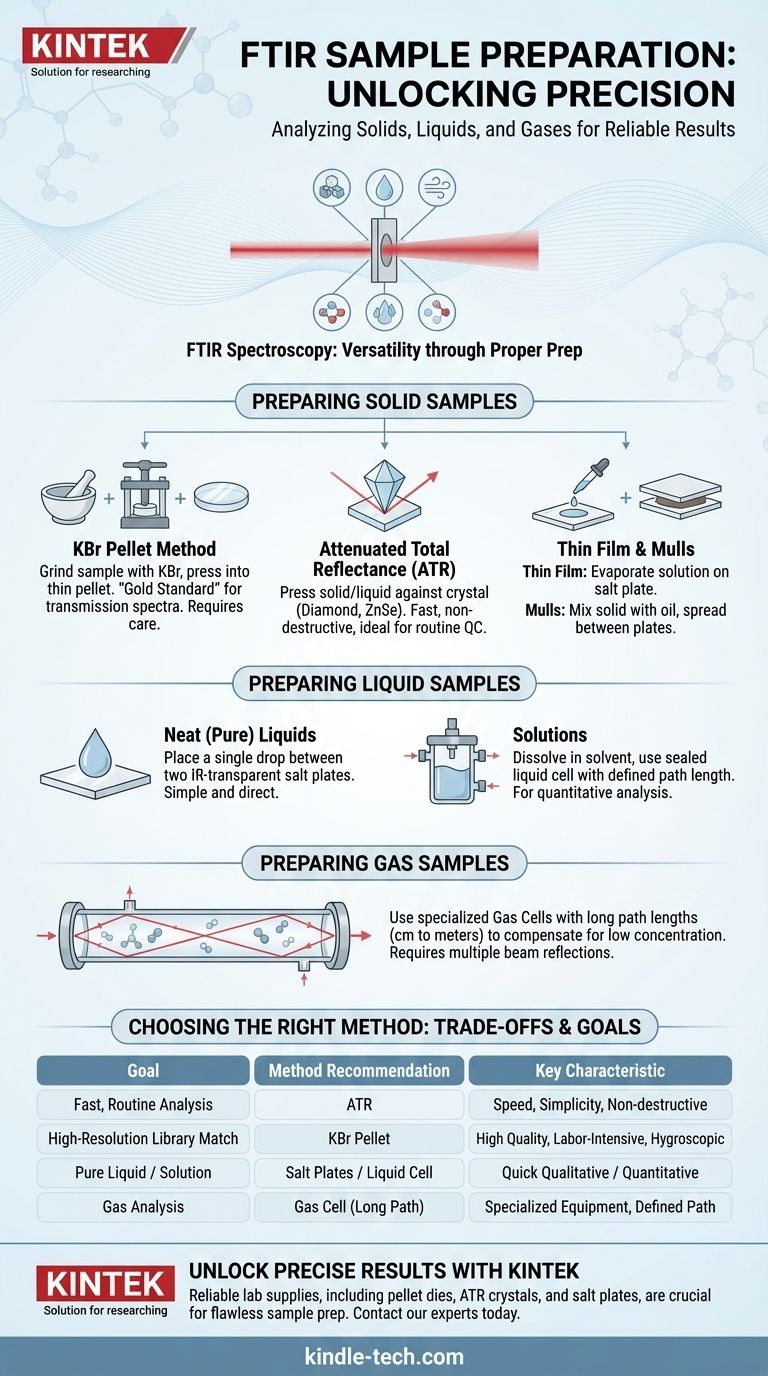
関連製品
- 実験材料・分析用金属顕微鏡試料作製機
- NRR、ORR、CO2RR研究用のカスタマイズ可能なCO2削減フローセル
- コーティング評価用電解セル
- PTFE電解セル 電気化学セル 耐腐食性 シール・非シール
- 高度なバッテリー研究電気化学分析のためのカスタマイズ可能なSwagelokタイプテストセル




